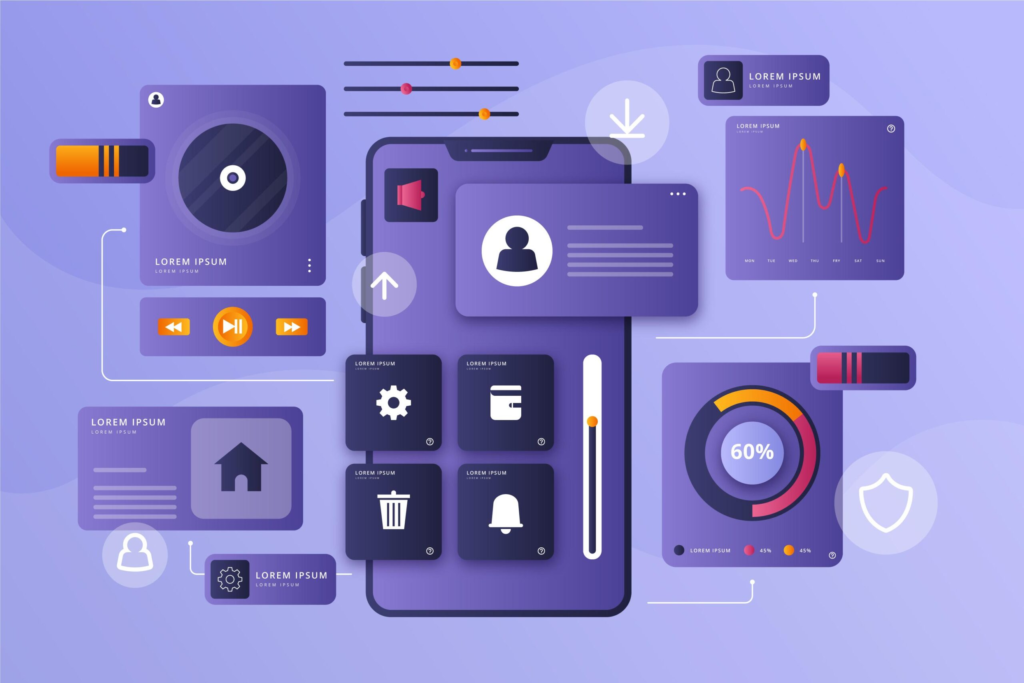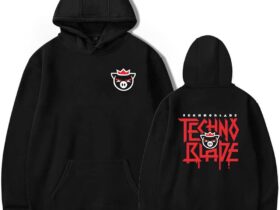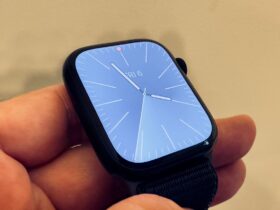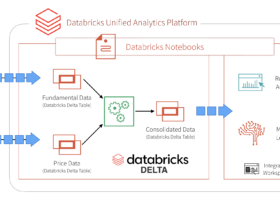Introduction to UI UX Training

In today’s digital-first world, User Interface (UI) and User Experience (UX) design have become crucial elements in creating successful digital products. As businesses increasingly recognize the importance of user-centered design, the demand for skilled UI/UX professionals has skyrocketed. Bangalore, often referred to as India’s Silicon Valley, has emerged as a hub for UI/UX education, offering a wide array of training programs to aspiring designers and industry owners.
If you’re considering a career in UI/UX design or looking to upskill, you might be wondering what exactly you’ll learn in a UI/UX design course. This blog post will delve into the top five skills that UI/UX training institutes in Bangalore focus on developing, ensuring that their graduates are well-equipped to meet the industry’s evolving demands.
The UI/UX Landscape in Bangalore

Before we dive into the specific skills, let’s take a moment to understand why Bangalore has become a hotspot for UI/UX education:
- Tech Hub: As India’s IT capital, Bangalore is home to numerous tech startups and established companies, creating a high demand for UI/UX professionals.
- Innovation Culture: The city’s innovative ecosystem encourages the development of cutting-edge design practices and technologies.
- Diverse Learning Opportunities: From short-term workshops to comprehensive degree programs, Bangalore offers a wide range of UI/UX courses to suit different learning needs.
- Industry Connections: Many UI/UX designer courses in Bangalore have strong ties with local businesses, providing students with valuable industry exposure and networking opportunities.
Now, let’s explore the top five skills that UI/UX training institutes in Bangalore prioritize in their curricula.
Skill 1: User Research and Analysis
At the heart of effective UI/UX design lies a deep understanding of the user. This is why user research and analysis is typically the first major skill emphasized in any reputable UI/UX course in Bangalore.
What You’ll Learn:
- User Research Methodologies: Students are introduced to various research techniques such as surveys, interviews, focus groups, and usability testing. They learn how to choose the right method for different project requirements.
- Creating User Personas: Developing detailed, research-based user personas is a crucial skill. These fictional characters represent different user types and help designers empathize with their target audience.
- Journey Mapping: Students learn to create visual representations of the user’s experience with a product or service over time and across different channels.
- Data Analysis: Interpreting qualitative and quantitative data is essential. Courses teach students how to analyze research findings and translate them into actionable design insights.
- Empathy Mapping: This technique helps designers visualize user attitudes and behaviors, fostering a user-centered approach to design.
Why It’s Important:
User research forms the foundation of user-centered design. By understanding user needs, behaviors, and pain points, designers can create solutions that truly resonate with their target audience. This skill is crucial for creating products that not only look good but also solve real user problems effectively.
Real-world Application:
Imagine you’re tasked with redesigning a mobile banking app. Your user research might reveal that older users struggle with small text sizes, while younger users prioritize quick access to features like mobile payments. This research would directly inform your design decisions, leading to an app that caters to diverse user needs.
Skill 2: Information Architecture and Wireframing
Once designers understand their users, the next crucial skill is organizing information in a way that’s intuitive and easy to navigate. This is where information architecture (IA) and wireframing come into play.
What You’ll Learn:
- Information Architecture Principles: Students learn how to structure and organize content in a way that’s logical and user-friendly.
- Card Sorting and Tree Testing: These techniques help designers validate and refine their information architecture.
- Wireframing Tools: Courses introduce students to popular wireframing tools like Balsamiq, Axure, or Sketch.
- Creating Low-Fidelity Prototypes: Students practice creating basic layouts and interaction flows without getting bogged down in visual details.
- Usability Principles: Understanding concepts like cognitive load, progressive disclosure, and wayfinding is crucial for creating effective information architectures.
Why It’s Important:
A well-structured information architecture ensures that users can find what they need quickly and easily. Good wireframes serve as a blueprint for the final design, allowing stakeholders to focus on functionality and user flow before visual design comes into play.
Real-world Application:
Consider an e-commerce website redesign project. Your IA skills would come into play when deciding how to categorize products, structure the navigation menu, and design the search functionality. Your wireframes would then visualize these decisions, showing how users might move through the site from the homepage to product pages to checkout.
Skill 3: Visual Design and UI Patterns
While UX design focuses on the overall feel of the product, UI design hones in on the look. Visual design skills are crucial for creating aesthetically pleasing and brand-aligned interfaces.
What You’ll Learn:
- Color Theory: Understanding color psychology and creating effective color schemes is a key component of UI design courses in Bangalore.
- Typography: Students learn about font selection, pairing, and hierarchy to enhance readability and visual appeal.
- Layout Principles: Concepts like grid systems, white space, and visual hierarchy are covered in depth.
- UI Patterns and Components: Courses teach students about common UI elements and when to use them effectively.
- Brand Integration: Students learn how to incorporate brand guidelines into their UI designs for consistency across platforms.
Why It’s Important:
Visual design is what catches the user’s eye and creates the first impression. A visually appealing interface can enhance user engagement and make the product more enjoyable to use. Moreover, consistent visual design helps build brand recognition and trust.
Real-world Application:
Let’s say you’re designing a health and fitness app. Your visual design skills would come into play when choosing a color scheme that promotes a sense of energy and well-being, selecting fonts that are easy to read during workouts, and creating icons that quickly communicate different types of exercises or nutritional information.
Skill 4: Interaction Design and Prototyping
Interaction design focuses on creating engaging interfaces with well-thought-out behaviors. Prototyping allows designers to test these interactions before final development.
What You’ll Learn:
- Micro-interactions: Students learn to design small, functional animations that enhance the user experience.
- Gesture-based Interfaces: With the prevalence of mobile devices, understanding how to design for touch, swipe, and other gestures is crucial.
- Prototyping Tools: Courses introduce students to industry-standard tools like Adobe XD, Figma, or ProtoPie.
- Interactive Prototyping: Students learn to create clickable prototypes that simulate the actual user experience.
- User Flow Optimization: Understanding how to guide users through a series of interactions to accomplish their goals efficiently.
Why It’s Important:
Good interaction design can make a product feel more intuitive and enjoyable to use. Prototyping allows designers to test and refine these interactions, catching usability issues early in the design process and saving development time and resources.
Real-world Application:
Imagine you’re working on a music streaming app. Your interaction design skills would be crucial in creating smooth transitions between screens, designing intuitive controls for playing, pausing, and skipping tracks, and creating engaging animations for actions like adding songs to a playlist. You’d then use prototyping to test these interactions, ensuring they feel natural and enhance the overall user experience.
Skill 5: Usability Testing and Iteration
The final key skill emphasized in UI/UX courses in Bangalore is the ability to test designs with real users and iterate based on feedback.
What You’ll Learn:
- Usability Testing Methods: Students learn various testing techniques, from guerrilla testing to formal lab studies.
- Creating Test Plans: Courses cover how to define test objectives, recruit participants, and design tasks that yield valuable insights.
- Moderating Test Sessions: Students practice guiding participants through usability tests without biasing results.
- Analyzing Test Results: Learning to identify patterns in user behavior and prioritize issues for addressing.
- Iterative Design Process: Understanding how to apply user feedback to refine and improve designs over time.
Why It’s Important:
No matter how experienced the designer, there’s no substitute for testing with real users. Usability testing helps uncover issues that might not be apparent to the design team and ensures that the final product truly meets user needs.
Real-world Application:
Let’s say you’ve designed a new feature for a productivity app. Through usability testing, you might discover that users are struggling to find this feature or are confused about how to use it. This feedback would guide your next design iteration, perhaps leading you to adjust the feature’s placement in the app’s navigation or refine its onboarding process.
Choosing the Right UI/UX Course in Bangalore

Now that we’ve explored the key skills developed by UI/UX training institutes in Bangalore, you might be wondering how to choose the right course for you. Here are some factors to consider:
- Curriculum Comprehensiveness: Look for courses that cover all five skill areas mentioned above, as well as any additional areas of interest to you.
- Practical Projects: The best UI/UX designer courses in Bangalore offer hands-on projects that simulate real-world design challenges.
- Industry Connections: Consider programs that have strong ties with local tech companies, as these can provide valuable networking and internship opportunities.
- Instructor Expertise: Look for courses taught by experienced professionals who are active in the UI/UX industry.
- Tools and Resources: Ensure the course provides access to industry-standard design and prototyping tools.
- Portfolio Development: The best courses will help you build a strong portfolio, which is crucial for landing your first UI/UX job.
List of UI/UX Courses in Bangalore
While we can’t endorse specific institutions, here’s a general overview of the list of UI/UX courses available in Bangalore:
- Full-time Immersive Programs: These intensive courses, typically lasting 3-6 months, are ideal for those looking to switch careers or dive deep into UI/UX design.
- Part-time Courses: Designed for working professionals, these courses usually take place in the evenings or on weekends over a longer period.
- Online Courses with Local Mentorship: Some global online learning platforms partner with local mentors in Bangalore to provide a blend of online learning and in-person guidance.
- Workshops and Boot Camps: Short, intensive programs focusing on specific UI/UX skills or tools.
- Degree Programs: Some universities in Bangalore offer undergraduate or postgraduate degrees in UI/UX design or related fields.
When researching UI/UX courses in Bangalore, be sure to read reviews, attend information sessions, and if possible, speak with alumni to get a well-rounded view of each program.
Conclusion: Embarking on Your UI/UX Journey in Bangalore
The field of UI/UX design is dynamic and ever-evolving, making it an exciting career choice for creative problem-solvers. By focusing on developing the five key skills we’ve discussed – user research, information architecture, visual design, interaction design, and usability testing – you’ll be well-prepared to tackle the challenges of this rewarding field.
Bangalore, with its thriving tech scene and diverse range of UI/UX training options, offers an ideal environment to launch or advance your design career. Whether you choose a comprehensive UI/UX design course or a specialized UI/UX designer course in Bangalore, the skills you gain will be invaluable in today’s digital-first world.
Remember, while formal training is important, becoming a great UI/UX designer also requires passion, creativity, and a commitment to lifelong learning. The skills you develop in your course are just the beginning. As you apply these skills to real-world projects and stay abreast of industry trends, you’ll continue to grow and evolve as a designer.
So, are you ready to embark on your UI/UX journey in Bangalore? With the right training and dedication, you’ll be well on your way to shaping the digital experiences of tomorrow.















Leave a Reply